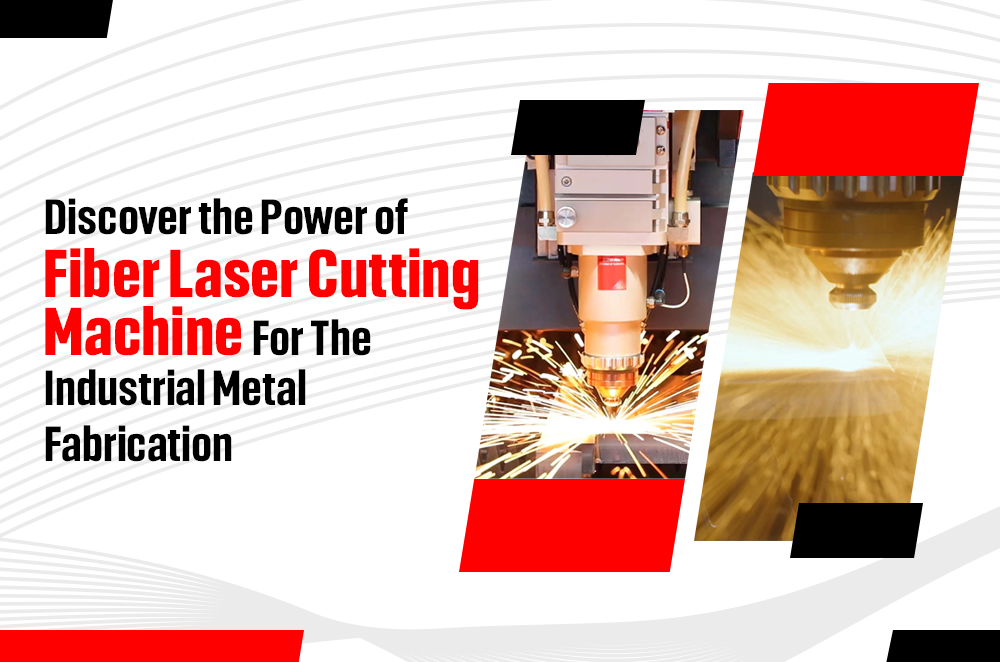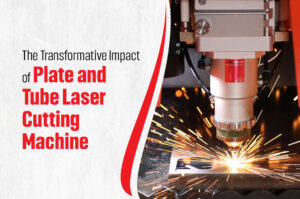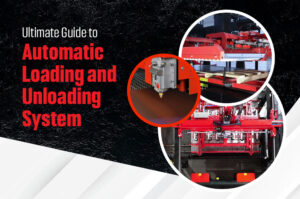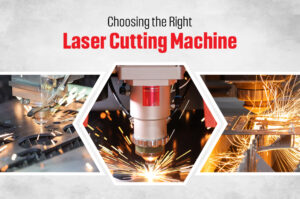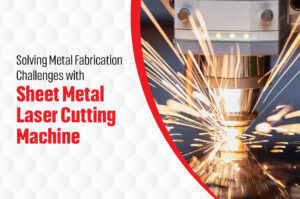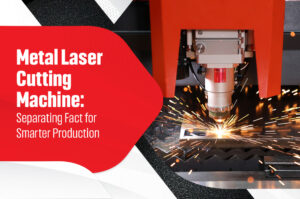Overview of the Metal Fabrication Industry
The metal fabrication industry plays a vital role in the nation’s economic development and diversification strategy. Useful for industrialization and infrastructure development. The metal fabrication activities cater to diverse sectors such as construction, automotive, aerospace and oil and gas. It is characterized by advanced technological capabilities, strategic geographic location and acts as a supportive business environment. Facilitates efficient import & export of raw materials, finished products and enhances the competitiveness of local manufacturers.
Introduction to Business Point International – Industrial Machinery Supplier
We are the leading industrial machinery supplier in the UAE, specializing in supplying fiber laser cutting machine & sheet metal fabrication machines and providing solutions to various sectors. With a commitment to customer satisfaction, Business Point International has established itself as a trusted supplier for businesses seeking innovative technologies to enhance manufacturing processes.
The company offers a comprehensive range of industrial machinery including fiber laser cutting machine, welding machines, bending & folding machines and automation solutions. With a team of experienced professionals and strategic engineers, we deliver tailored solutions to meet the specific needs of our clients and enabling to achieve higher efficiency, precision & profitability.
Significance of Technology in Boosting Productivity
Advanced technology plays a pivotal role in driving productivity and industrial competitiveness in the metal fabrication industry. One of the most significant technological advancements in recent years in metal processing is the adoption of fiber laser cutting machine. The cutting-edge machines utilize high-intensity laser beams generated by fiber optics and precisely cut through various metals with exceptional accuracy.
The integration of fiber laser cutting machine into the process of metal fabrication offers several advantages. Firstly, it enables faster turnaround times and assists manufacturers in meeting tight production schedules and customer deadlines. It has high processing speed and rapid acceleration rates of fiber laser machines which significantly reduce processing times compared to traditional cutting methods, thereby enhancing overall operational efficiency.
Secondly, the machine delivers superior cut quality, ensuring burr-free edges and precise dimensional accuracy. It eliminates the need for secondary or subsequent finishing operations such as deburring or grinding. It is leading to cost savings and improved product quality. Additionally, fiber lasers can process a wide range of materials including stainless steel, aluminum, brass, mild steel & copper with minimal heat-affected zones, maximizing material utilization and minimizing waste.
Furthermore, the modernized fiber laser technology gives greater flexibility & versatility in user-friendly design and customization. It enables manufacturers to produce complex shapes, designs and intricate patterns with ease. It allows businesses to cater to diverse customer requirements and quickly adapt to changing market demands, thereby maintaining a competitive edge.
The metal fabrication industry in the UAE is thriving, driven by innovative technology and the adoption of advanced equipment such as fiber laser cutting machine. It is empowering the manufacturers to enhance productivity, quality, and competitiveness in an increasingly dynamic market landscape. As technology continues to evolve, it is boosting productivity and driving growth in the metal fabrication sector will only continue to grow.
Understanding Metal Fabrication Industry Challenges and Its Importance in the Manufacturing Sector
The metal fabrication industry is a crucial component of the manufacturing sector and encompasses processes such as cutting, bending, welding and assembling metal components that create various outputs in diverse industries. It is playing a vital role in producing essential components and structures from construction, automotive to aerospace and electronics.
It serves the businesses as the backbone of industrial development, providing the required infrastructure and expertise to support economic growth & innovation. It has the ability to transform raw materials into finished end products with utmost precision and is essential to meet the demands of modern manufacturing.
Challenges Faced by Metal Fabrication Businesses
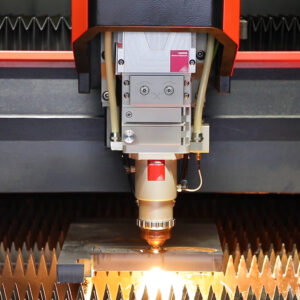 ● Precision Requirements
● Precision Requirements
The metal fabrication process requires high levels of precision to meet strict dimensional tolerances and end-product quality standards. It assists in achieving precise cuts, bends and welds on the material which is essential for ensuring the functionality, safety & performance of fabricated results. However, conventional cutting methods mostly struggle to maintain consistent accuracy, leading to discrepancies and rework.
● Efficiency and Speed
In today’s fast-paced manufacturing, efficiency & speed are paramount in meeting production deadlines and staying competitive. The businesses face pressure to optimize the processes and minimize cycle times while maintaining quality standards. Delaying the manufacturing in fabrication workflows can disrupt supply chains and incur additional costs.
● Material Wastage
Material wastage is a significant concern in the metal fabrication industry, impacting both costs & environmental sustainability. The traditional cutting methods result in substantial material losses due to kerf width and heat-affected zones. It is highly minimizing the waste and maximizing material utilization which is essential for improving profitability & reducing environmental impact.
● Cost Management
Effective cost management is critical for metal fabrication businesses to remain profitable amidst rising raw material costs. It is highly reducing labor expenses and competitive pressures in manufacturing. To achieve cost efficiency, optimizing resource utilization, streamlining production processes and controlling overhead expenses are required. However, fluctuations in market demand can pose challenges to cost forecasting and budgeting.
Utilizing Fiber Laser Cutting Machine to Address Challenges
The adoption of fiber laser cutting machine is providing a transformative solution to address the challenges faced by the metal fabrication industry.
● Precision
Fiber laser cutting machine provide exceptional cutting precision and high repeatability that enables for accurate fabrication of complex shapes and contours. Advanced laser control systems and automatic calibration features assure consistent dimensional accuracy, minimizing rework and scrap.
● Efficiency and Speed
It provides unparalleled cutting speeds and acceleration rates which is significantly reducing processing times compared to conventional cutting methods. The high-power laser beam density and high energy efficiency enable rapid material removal, leading to enhanced productivity and shorter lead times.
● Material Wastage
It operates the material with narrow kerf widths and minimal heat-affected zones to result in reduced material wastage and improved material utilization. It can process a wide range of metals with minimal distortion, enhances efficiency and cost-effectiveness.
● Cost Management
The initial investment of fiber laser technology may be higher than traditional cutting equipment but the long-term advantages outweigh the costs. Reduced operating expenses, lower scrap rates and increased throughput contribute to overall cost savings & improved profitability over time.
The metal fabrication industry faces various challenges related to material wastage, precision and cost management. However, the adoption of laser cutting machine promotes overcoming these challenges and drives innovation in metal fabrication sectors. Leveraging advanced laser technology can enhance productivity and competitiveness in today’s dynamic marketplace.
Definition and Functionality of Fiber Laser Cutting Machine
Advanced industrial equipment is used for precision cutting of various materials, primarily metals. Unlike conventional processing methods that majorly utilize CO2 lasers or mechanical tools, fiber laser cutting machine employ laser beam technology to generate and deliver a high-intensity optical beam for cutting.
The functionality of the fiber laser machine revolves around the working principle of fiber laser material processing. The powerful beam is emitted by using the laser source and directed through a series of optical components including fiber optic cables and lenses which are connected with the cutting head. he cutting head focuses the beam onto the material, melting or vaporizing the workpiece along the programmed cutting path on the software. The resulting high-energy density laser beam allows for clean, precise cuts with minimal heat-affected zones.
Key Features that Make Fiber Laser Cutting Machine Stand Out
● Precision Cutting
The laser cutting machine is renowned for its exceptional precision and accuracy. The concentrated laser beam assists in achieving intricate cuts with tight tolerances to meet deadlines, ensuring high-quality finished products. Advanced control systems and motion mechanisms ensure accurate positioning and enhance cutting precision.
● High-Speed Capabilities
In the fiber laser cutting machine, the remarkable cutting speed is one of the standout features. The high-power fiber laser assists in rapidly traversing through the material, significantly reducing processing times compared to traditional cutting methods. The increased high speed translates to higher productivity and shorter lead times and is ideal for high-volume production environments.
● Versatility in Materials
The unparalleled versatility assists in cutting a wide range of materials. Unlike CO2 lasers, fiber laser is well-suited for any hard materials precisely due to the shorter wavelength and higher absorption rate. Additionally, it processes various thicknesses of materials without compromising on quality or speed.
● Cost-Effectiveness
The advanced technology and capabilities of the machine are useful for cost-effective solutions and metal fabrication operations. Compared to CO2 lasers, fiber lasers consume less energy and require minimal maintenance that results in consume less energy and require minimal maintenance. Additionally, the high cutting speed contributes to reduced material wastage and labor costs.
In summary, it provides cutting-edge tools that revolutionize the metal fabrication processes with versatility and cost-effectiveness. By leveraging fiber optic technology, the machine enables manufacturers to achieve superior cutting quality. It optimizes production efficiency and stays competitive in today’s demanding marketplace. It is useful for batch production or mass manufacturing, producing unparalleled performance, making it an indispensable asset for modern industrial operations.
How Fiber Laser Cutting Machine Address Challenges
– Precision Requirements
Laser Technology Precision
Utilizing fiber laser technology helps to achieve exceptional precision in cutting. The focused high-intensity beam allows for precise control over the processing. This accuracy ensures the fabricated components meet exact specifications, enhancing product quality and consistency.
Reduction of Errors and Rework
Leveraging fiber laser technology minimizes the errors and reduces the need for rework. The automated control systems and real-time monitoring of the working process execute with precision and minimize deviations from design specifications. As a result, manufacturers can avoid costly rework and maintain high production workflows.
– Efficiency and Speed
Accelerated Cutting Speeds
Thanks to the intense energy density of the laser beam and renowned for the high cutting speeds. The process significantly accelerates the cutting process, reducing cycle times and increasing overall productivity. The enhanced speed enables manufacturers to meet the customer’s production schedules and customer demands efficiently.
Increased Throughput
The combination of high processing speeds and rapid acceleration rates allows for increased throughput. Manufacturers can able to process more workpieces in a shorter amount of time, maximizing machine utilization and optimizing production capacity. The improved throughput boosts productivity and enhances the overall efficiency of metal fabrication operations.
– Material Wastage
Optimal Material Utilization
It highly optimizes material utilization by minimizing kerf width and heat-affected zones during the cutting process. The focused laser beam delivers narrow cuts with minimal material wastage which helps the manufacturers to maximize the use of raw materials and reduce scrap. This efficient material utilization leads to cost savings and environmental benefits with sustainable manufacturing practices.
Minimization of Scrap
The precise cuts with minimal distortion help to minimize scrap generation. It can produce accurate components with minimal offcuts or defects. Reduces the amount of material discarded during fabrication. This reduction in scrap lowers material costs, minimizes waste disposal and contributes to a cleaner & more sustainable production environment.
– Cost Management
Energy-Efficient Operations
It is highly energy-efficient compared to traditional cutting methods. The fiber optic technology results in lower power consumption, reducing operating costs and environmental impact. Additionally, the utmost material utilization and minimized scrap generation further contribute to cost savings. It is a cost-effective solution for metal fabrication businesses.
Long-Term Cost Benefits
Despite the initial investment required, laser cutting machine offers highly significant long-term return benefits. The combination of increased efficiency with reduced material wastage leads to higher productivity and lower production costs over time. Additionally, the durability of fiber lasers results in minimal maintenance requirements. It is reducing operating expenses and enhancing overall cost management.
In conclusion, the machine addresses the challenges faced by metal fabrication businesses. It offers increased efficiency, optimal material utilization and cost-effective operations. The advanced laser technology enables manufacturers to enhance productivity, minimize waste and achieve greater profitability in a competitive manufacturing environment.
Case Studies: Success Stories in Metal Fabrication Sectors
Showcase Real-World Examples of Businesses Benefiting from Fiber Laser Cutting Machine
Company X: Precision Engineering Solutions Provider
Company X is a leading precision engineering solutions provider. Implemented laser cutting machines in its metal fabrication processes. By switching from traditional cutting methods to fiber laser technology, the company experienced significant improvements in cutting precision and versatility. It has the ability to produce complex components with tight tolerances which assists the company to expand the customer base and win contracts in the industries.
Company Y: Sheet Metal Fabrication Specialist
Company Y is a specialist in the sheet metal fabrication industry and enhances its production capabilities. With the adoption of fiber laser technology, the company achieved remarkable improvement in cutting efficiency. It has the ability to process various thicknesses of sheet metal with exceptional accuracy. Fulfilling the customer’s order faster and more cost-effectively. As a result, the company experienced increased customer satisfaction while gaining a competitive edge in the market.
Quantifiable Improvements in Productivity and Efficiency
Case Study: Company X
Before adopting sheet metal laser cutting machines, this company faced challenges with slow cutting speeds and limited precision. It is leading to the benefit of lowering the production delays and avoiding the quality issues. After implementing fiber laser technology, saw a 40% increase in cutting speed and a 50% reduction in error rates with an increase in productivity, a significant decrease in rework, resulting in cost savings & enhanced customer satisfaction.
Case Study: Company Y
Prior to integrating the sheet metal laser cutting machine into the implementation, the company struggled with inefficient processing methods and high material wastage. With fiber laser technology, the company achieved a 50% reduction in cutting cycle times and a 20% decrease in material scrap. Increased the throughput and improved overall operational efficiency, leading to higher profitability & growth opportunities.
In conclusion, real-world case studies demonstrate how fiber lasers are beneficial for the metal fabrication sector. It has embraced advanced processing to experience significant improvements in productivity and cost-effectiveness, enabling it to stay competitive & thrive in the demanding marketplace.
Choosing the Right Fiber Laser Cutting Machine for the Business
Factors to Consider When Selecting a Sheet Metal Laser Cutting Machine
Selecting the right fiber laser machine is crucial to optimize business productivity and efficiency. There are several key factors that should be considered before making a decision.
Cutting Requirements: Evaluate the industrial specific cutting needs including material types, thicknesses and desired cutting speeds. Ensure the chosen machine has the ability to handle the required range of materials and thicknesses, meeting the production demands.
Cutting Precision: Consider the precision level required for the industrial applications. It has advanced laser control systems & motion mechanisms, offers high cutting accuracy & repeatability and ensures consistent quality across all fabricated components.
Machine Size and Capacity: Determine the size of the workpiece have to process and choose a machine with an appropriate bed size & cutting area. Consider future growth for the business and expansion plans to ensure that the selected machine can accommodate increasing levels of production volumes.
Ease of Use and Automation: Check for the features that enhance ease of use and streamline the workflow process including intuitive software interfaces, automatic nesting algorithms and remote monitoring capabilities. The entire automation features improve operational efficiency and reduce labor costs.
Maintenance and Support: Evaluate the maintenance requirements and the availability of technical support with the spare parts. Choose a reputable supplier with a proven track record of reliability and responsive best customer service to minimize downtime and maximize uptime.
Cost and Return on Investment (ROI): Consider the initial investment cost of the machine as well as other ongoing operating expenses such as energy consumption, machine maintenance and consumables. Calculate the expected ROI based on potential productivity gains, material savings and competitive advantages gained from the investment.
Business Point International as a Reliable Industrial Machinery Supplier
We are committed to helping businesses find the right industrial machinery to meet their specific needs and requirements. As a trusted industrial machinery supplier, we are offering several advantages.
Extensive Product Portfolio: We are providing a comprehensive range of industrial machinery such as laser cutting machines, sheet metal fabrication machines, digital printing machines and wood cutting machines. With a diverse selection of products, businesses can find the right machine to suit the applications and budget.
Expertise and Support: Our team consists of knowledgeable professionals with extensive experience in the various industrial sectors. We are providing expert guidance and support to help businesses navigate the selection process and giving the initial consultation to installation & training.
Quality and Reliability: Each machine undergoes rigorous testing and quality assurance checks to ensure optimal performance, producing high-standard machines and assuring durability in demanding industrial environments.
Customer Satisfaction: We prioritize customer satisfaction and strive to exceed expectations at every step of the machine purchasing. Committed to building long-term relationships with clients by delivering exceptional service, prompt assistance and ongoing support.
Conclusion
In summary, fiber laser cutting machine stand as transformative equipment in enhancing productivity enhancing productivity. The machine addresses various challenges faced by businesses including meeting precision requirements, improving efficiency, minimizing material wastage and managing costs effectively. It streamlines operations, allows for faster turnaround times, reduces errors and increases throughput. Highly optimizes the material utilization, minimizes scrap, leading to cost savings and environmental benefits. Gives long-term cost benefits, energy-efficient operations and quantifiable improvements in productivity.
Encouraging businesses with advanced technologies for growth. In today’s rapidly evolving industrial landscape, modernized technology is crucial for the industry to stay ahead of the competition and drive growth. By staying updated on emerging trends and innovations, unlock new opportunities and optimize processes.
For businesses looking to harness the power of laser cutting machines, we invite you to explore Business Point International’s range of cutting-edge industrial machinery. Our comprehensive portfolio includes high-quality fiber lasers, tailored to meet the diverse needs and requirements of modern manufacturing businesses. For further inquiries or to request a consultation, please contact us! Let us help to unlock the full potential of fiber laser technology and take your business to new heights of success.

